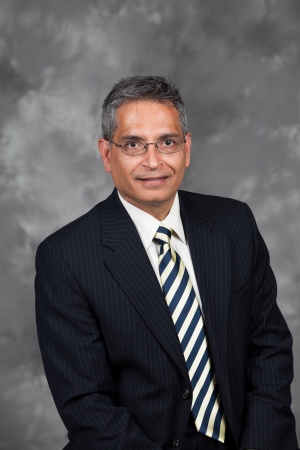“I’m very well satisfied with my treatment. I eat very slowly, but I could sit down and have a steak right now. I can eat anything.”

Francis Miller loves nothing more than enjoying a fine meal with his wife, June. But two years ago, he began noticing that food often got caught in the back of his throat when he ate. “I had to drink water so I wouldn’t choke,” says Francis, 81, of Columbus. The problem worsened over time, until just about anything he ate or drank got stuck on the way down and made him cough.
June eventually began chopping her husband’s food into small pieces and softening it with gravy or chicken broth. “It was like eating baby food,” says Francis, who lost interest in favorite dishes and dropped over 20 pounds. In November 2020, Francis finally decided to seek help for his problem and learned that difficulty with swallowing has a name: dysphagia.
Variety Of Causes
Dysphagia is especially common among older adults in part because so many things can cause healthy swallowing to go wrong. Normally, a network of muscles moves food and liquid from the mouth into the throat and down the esophagus to the stomach. Conditions that can interfere with this process include:
- Neurological disorders such as Parkinson’s disease, which can interfere with airway coordination and cause food or liquid to be inhaled
- Stroke
- Head and neck cancers or, in some cases, their treatment
- Chronic gastrointestinal reflux disease (GERD), which causes acid to wash up from the stomach into the esophagus, potentially causing tissue damage that affects swallowing
- Aging, which can weaken muscles needed to force food down the esophagus.

Dysphagia can sometimes have serious health consequences, so Francis’s first goal was to discover what the underlying problem was. Working with Zafar Zamir, MD, a gastroenterologist at Robert Wood Johnson University Hospital (RWJUH) Hamilton, Francis underwent a series of tests.
In one, Dr. Zamir used an endoscope (a thin, flexible tube with a light and video camera) to check Francis’s throat and esophagus for a narrowing of the food pipe, or stricture. Another test, called a videofluoroscopic swallowing evaluation (VSE, formerly known as a barium swallow test), entailed drinking a special liquid that helped a technician capture moving X-ray images of structures in the throat and esophagus.

From there, Francis was referred to RWJUH Hamilton speech language pathologist Inessa Levine, MS, CCC-SLP, who treats dysphagia and understands it, even beyond its health repercussions.
In some cases, difficulty swallowing leaves people feeling embarrassed to eat with others, isolating them from friends and loved ones. “The goal of therapy is to restore as much normal function as physiologically possible to improve the patient’s quality of life,” Levine says.
Strengthening Muscles
When Francis saw Levine for further evaluation, she viewed the VSE but also took a detailed medical history and asked Francis to describe his symptoms in detail. It became clear to Levine that Francis didn’t suffer from a serious medical condition. Instead, his dysphagia was caused by aging and weakened muscles. And like other muscles in the body, those that regulate swallowing can be strengthened.
Levine prescribed exercise to do just that. During office visits, Levine had Francis use a special resistance device to target and strengthen throat muscles that are involved with swallowing. She also instructed him on techniques for swallowing deeply, first with no food, then with ice chips and finally with food. Francis practiced the exercises during therapy but did repetitions at home as well.
Other techniques he could practice at home took the form of rules for eating such as relaxing and chewing slowly, holding his head up, not looking down at his food and not talking while eating. Other options for treatment included using adaptive devices such as specially designed straws, cups and spoons, along with a painless form of electrical stimulation that helps activate nerves in throat muscles and improve swallowing.
For the Millers, Levine’s treatment has been life-changing. “She did a great job. We loved her,” says June. “We can go out to eat now and don’t have to worry about...”
…“Whether I’m going to choke!” Francis says, enthusiastically finishing his wife’s thought. “I’m very well satisfied with my treatment. I eat very slowly, but I could sit down and have a steak right now. I can eat anything.”
Do You Have Dysphagia?Talk to a doctor about getting evaluated for dysphagia if you have any of the following symptoms:
|
To learn more about treatment for swallowing difficulties at Robert Wood Johnson University Hospital Hamilton, call 87-REHAB-RWJ.